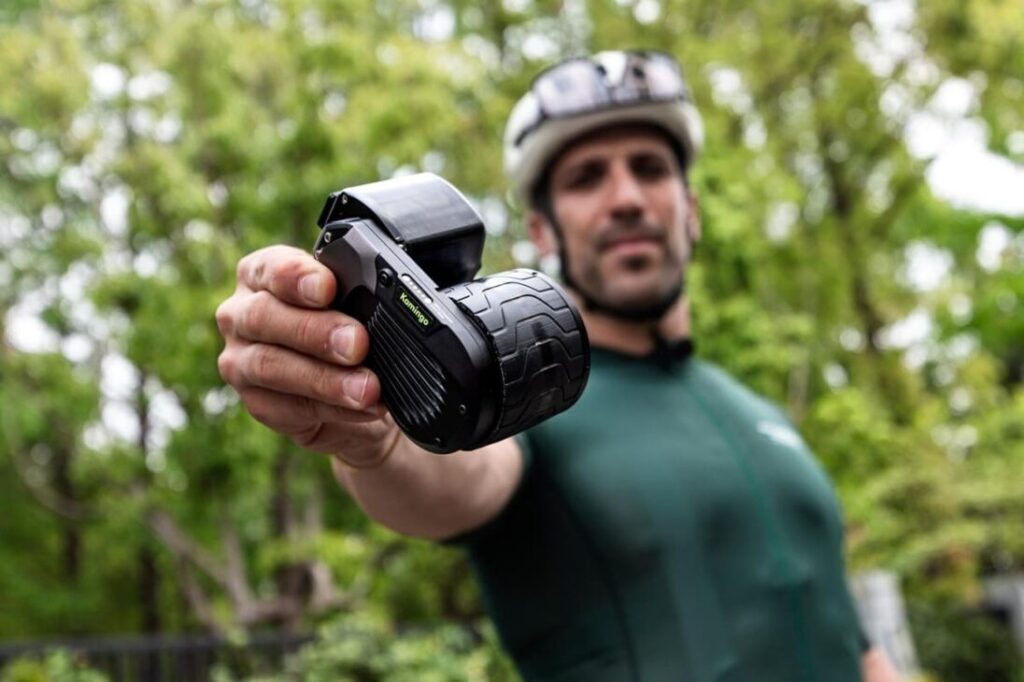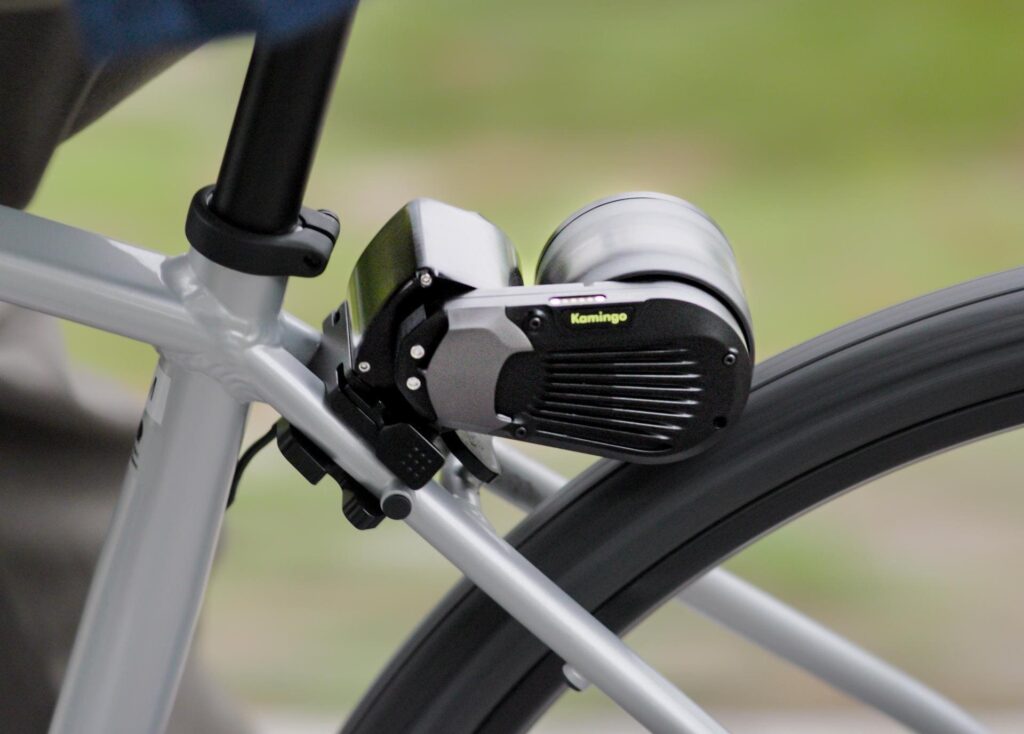The e-bike revolution is in full swing, offering a greener, healthier, and often more fun way to get around. But the high cost of entry, with quality e-bikes often running into thousands of dollars, has kept many people from making the switch. What if you could get all the benefits of an electric boost without ditching the beloved bicycle you already own?
A new category of innovative gadgets is emerging to solve this exact problem: clip-on e-bike conversion kits. These self-contained units promise to transform almost any standard bike into a powerful e-bike in a matter of seconds, with no tools required.
We're diving deep into this exciting new tech, looking at leading examples like the CLIP and the Livall PikaBoost. We'll explore how they work, what they can do, and provide the expert take on whether this is the future of urban commuting, from the streets of Luanda to the bike lanes of London.
How It Works: The Magic of Friction Drive
Unlike traditional conversion kits that require you to replace a wheel hub or install a complex mid-drive motor, these new devices operate on a brilliantly simple principle: friction drive.
The entire system—motor, battery, and controller—is housed in a single, portable unit. You simply clamp the device onto your bike frame, and a motorized roller makes contact with your tire. When you want a boost, the roller spins, pushing your tire and propelling you forward. It's an elegant, non-permanent solution that's incredibly easy to use.

The Contenders: A Look at the Top Kits
While several companies are exploring this space, two prominent examples showcase the potential of this technology.
1. The CLIP: Urban Commuter Chic
Designed in Brooklyn, the CLIP is focused on style and simplicity for the city rider. It mounts onto your front wheel fork and is designed to look like a sleek, modern accessory.
- The Geek's Pitch: It's the ultimate “last-mile” solution. You ride your bike to the train, clip it off and pop it in your backpack, then clip it back on for the final leg to the office.
- Key Specs:
- Motor: 450W
- Top Speed: 15 mph (24 km/h) assist
- Range: Up to 12 miles (19 km) on the “Explorer” model
- Weight: ~4 kg (9 lbs)
- Installation: Tool-free, clips onto the front fork.
2. Livall PikaBoost: The Smart All-Rounder
The PikaBoost takes a slightly different approach, mounting between your seatpost and rear wheel. It's packed with smart technology, including sensors that adapt the power output to the terrain.
- The Geek's Pitch: This is for the data-loving geek who wants more than just a simple motor. Its automatic terrain adaptation and regenerative braking (it recharges a little when going downhill or braking) are seriously smart features.
- Key Specs:
- Motor: 250W
- Range: Up to 18 miles (30 km)
- Weight: ~3 kg (6.6 lbs)
- Features: Automatic Adaptive Rate (AAR) for terrain, regenerative braking, fall detection.
- Installation: Tool-free, mounts onto the seatpost.
The Expert Take: The Pros and Cons of Going ‘Clip-On'
As with any technology, there are trade-offs. Here's our expert breakdown of where these devices shine and where they fall short.
The Pros:
- Affordability: They are significantly cheaper than buying a brand-new, quality e-bike.
- Portability & Security: This is a huge win. You can easily unclip the expensive motor and battery unit and take it inside with you, drastically reducing the risk of theft.
- Simplicity: The tool-free, “plug-and-play” installation is revolutionary compared to older, more complex conversion kits.
- Keep Your Bike: You don't have to give up the bicycle you've spent years perfecting and getting comfortable with.
The Cons (The Reality Check):
- Wet Weather Performance: This is the Achilles' heel of friction drives. Because they rely on friction between the roller and your tire, performance can decrease significantly in wet or muddy conditions, with a higher chance of slippage.
- Efficiency and Tire Wear: A friction drive is inherently less efficient than a hub or mid-drive motor, as some energy is lost to heat and friction. Over time, it will also cause more wear on your tire compared to a standard setup.
- Limited Power & Range: These compact units have smaller batteries and motors than full e-bikes, making them best suited for shorter trips and moderate hills, not long-distance touring or conquering steep mountains.
Who Should Buy a Clip-On E-Bike Kit?
Clip-on e-bike conversion kits are a genuinely exciting innovation, but they are not a one-size-fits-all solution.
This is the perfect gadget for:
- The Urban Commuter: Someone with a 5-10 km commute on paved roads who wants to arrive at work without breaking a sweat.
- The University Student: An affordable way to get an electric boost for zipping across a large campus.
- The Casual Rider: Anyone who loves their current bike but wishes they had a little help on the occasional hill or against a strong headwind.
You should probably look elsewhere if you are:
- An All-Weather Commuter: If you ride regularly in the rain, the potential for slippage is a real concern.
- A Long-Distance Cyclist or Tourer: You will need the extended range and reliability of a dedicated e-bike with a larger battery.
- A Mountain Biker: These kits are not designed for the rigors and low-traction environments of off-road trails.
Ultimately, these devices brilliantly solve a specific problem for a specific audience. They democratize e-biking, making it more accessible and convenient than ever before. For the right person, they are a true game-changer.



